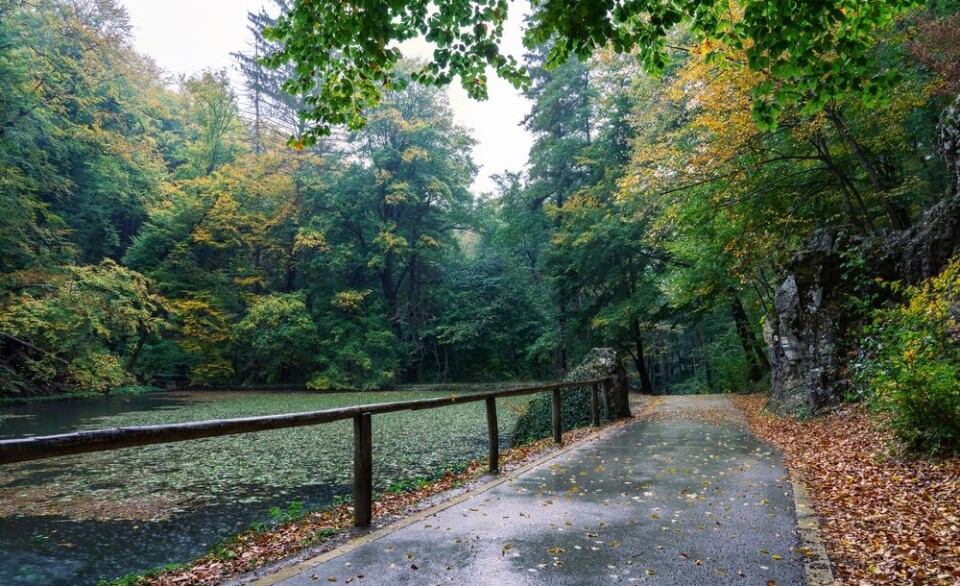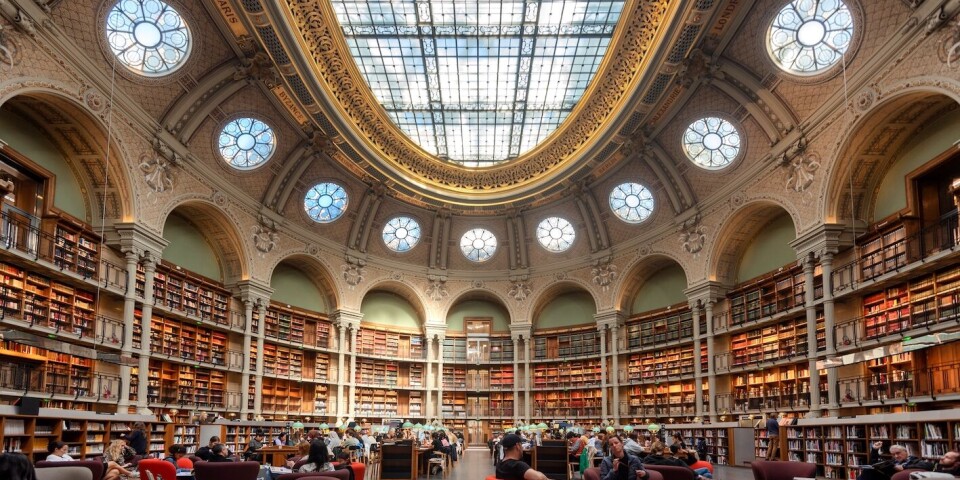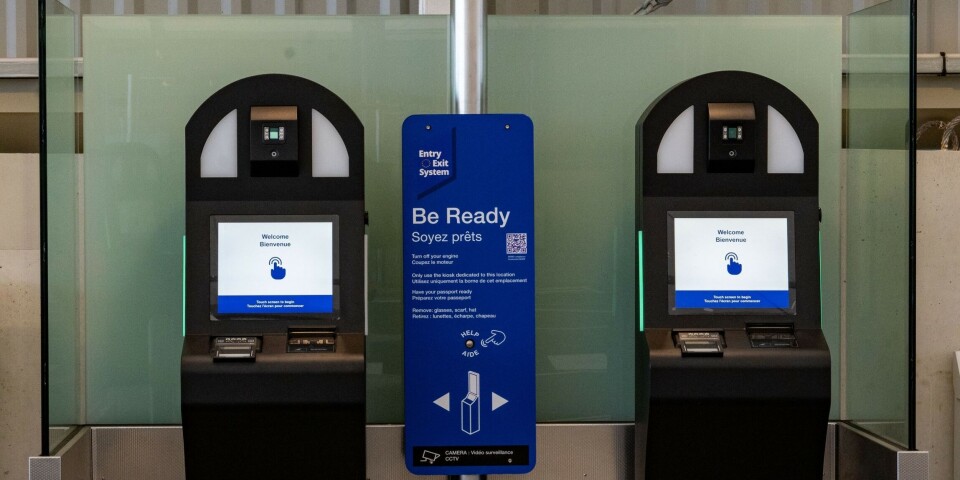-
French cities to host Americans’ ‘No Kings 2’ rallies as part of global pro-democracy day
Organisers hope that people dissatisfied with the policies of President Trump will join international protest
-
Classic French recipe with an exotic twist: caramelised onion soup
A dish inspired by the travels of two Paris chefs
-
La rentrée: 12 points to understand French schools
From food to bullying - some things may surprise you about the education system in France
Basilica restoration may help rebuild the reputation of Saint-Denis in Paris
An ambitious scheme to reconstruct the missing spire of the basilica of Saint-Denis in the troubled Paris suburb has given the Catholic bishop of the diocese and the communist mayor a common cause.

Rebuilding spire could spark to rekindle pride
Saint-Denis made headlines as the hideout of some of the terrorists who killed 130 people in last year’s attacks and Bishop Pascal Delannoy and Mayor Didier Paillard see the project as a way to unify the predominantly Muslim residents behind a common project and a common identity.
Although the basilica is the resting place for French kings from 10th to 18th centuries, Saint-Denis has most recently based its identity on sport and football in particular, with the nearby Stade de France built for the 1998 World Cup finals.
This year, the stadium is again a football flagship, hosting the Euro 2016 opener on June 10 plus the final a month later, and the city fathers want to use the basilica to develop the reputation of the area beyond football, crime and terrorism. Clément Aumeunier, city communications chief, said: “The basilica can become a second pillar to that identity.”
The spire was demolished in the 19th century after being hit by storms and the council is awaiting the green light from the Culture Ministry before carrying out scientific studies. Mayor Paillard hopes a visit from President François Hollande last September will give the plans added impetus.
Stuck in the planning stages for the past three decades, the spire project would have gone ahead in the 1980s until the question of public finances reared its head. Former mayor Patrick Braouezec and Mr Paillard have created a plan to avoid public finance.
Instead sponsorship, donations and entrance fees to the construction site, tower and spire would finance the project – similar to other high-profile historical schemes such as the building of the replica of Hermione, the frigate that carried General Lafayette to America in 1780, and Guédelon Castle, being built in Burgundy.
Original medieval techniques would be used, with iron, wood and stone workshops open to the public in a construction village alongside the basilica. Visitors would also be able to go up to the heights of the basilica to see the work as it advances.
Such step-by-step financing techniques mean the project could take 20 years, said Mr Aumeunier, but he added: “One might even say that completion isn’t the goal.”
The process, the jobs it would create and the involvement of Dionysians, as Saint-Denis residents are called, would allow them to use the historical monument as part of the identity of the city, contributing to local pride, while also developing tourism.
But in a city where many inhabitants have no Catholic heritage, can the basilica fulfil that role? Mr Aumeunier said: “It so happens our most significant monument is a basilica. If it had been a fortress, castle or something else, we would use the same approach.
“The basilica and its spire can be part of a common identity of a diverse population able to live together in harmony. Living together is the goal.”
“It’s a beautiful project,” said Bishop Pascal Delannoy. In addition to its place in his ministry he, too, recognises the wider role it can play in terms of civic pride. “Anyone can admire the beauty of a site without adhering to the faith celebrated there.”
Nevertheless, he recognises there are many people who pass the basilica every day without going in. “In the beginning, when one arrives at Saint-Denis, one always has the impression of contrasts. To one side of the square there’s the basilica that is rooted in the history of France and even beyond in the history of the Roman Empire.
“To the other, there’s the market where one discovers the extraordinary diversity of nationalities now living in Saint-Denis. The contrast is striking.”
Just a 20-minute Métro ride from the Champs-Elysées, Saint-Denis is a melting-pot of France’s contrasting social, religious and political issues.
Uniting such a diverse community would be a tall order for a person, let alone a building, particularly in a city where nearly half of the population is of Muslim heritage and in a department that is one of France’s poorest as well as the youngest, with 43% of the population under the age of 30.
The crime-rate is high. And lingering in the minds of many are images from November 18 when anti-terror forces raided the hideout of presumed perpetrators of the attacks that killed 130 people five days before.
Nevertheless, several positive spotlights are shining on the basilica this year. Among them is the celebration of the 50th anniversary of the building’s cathedral status.
Though most refer to it as a basilica, the proper religious term since 1966 has been basilica-cathedral and this follows the creation of the departments of the ring around Paris, including Seine Saint-Denis
As French dioceses generally follow departmental borders and given the size and history of the Basilica of Saint-Denis, it was the natural choice as the new diocese’s cathedral seat.
Now a restoration of the façade, chancel and crypt has been funded by the State, the guardian of the historical monument, and the church is to fund its own contemporary mark on the chancel with a new altar and pulpit along with a background embracing the liturgical chairs.
The church’s €400,000 project was launched last year aiming for the objects to be consecrated this year on October 9, the feast day of Saint-Denis and the 50th anniversary of the day on which the basilica was given cathedral status.
French-Slovakian artist Vladimir Zbynovsky, who lives near Saint-Denis, has designed an altar and pulpit that features a Greek cross cut into the altar and floor. It will allow a cruciform of light to descend into the crypt, where dozens of sarcophagi surround what is believed to be the burial site of Saint-Denis.
By late January, about half the funding for the creation of the liturgical furniture had been collected. Donations can still be made via Les Amis de la Basilique Cathédrale de Saint-Denis, on the website www.amisdelabasiliquesaintdenis.org
If funds can be raised to rebuild and restore the spire, the basilica may, after all, be able to serve as a symbol of identity and pride for the multi-ethnic, multi-cultural, multi-religious population of Saint-Denis.
Royal abbey is a forgotten gem
Traditionsays that in the year 250, Denis, the first bishop of Roman Lutetia/Paris, was beheaded on the hill that became known as Montmartre (Mount of the Martyrs), the story being that he picked up his own head and carried it, preaching along the way, until he lay down and died in Saint-Denis. In the 7th century, King Dagobert made it a royal abbey and his own burial there gave a royal stamp to the necropolis. There are now more than 70 royal tombs in the basilica and its crypt.
Building of the current basilica began in 1140 – it is called the pioneer of the Gothic style of architecture that would spread throughout Europe. The spire was completed in 1219 but badly damaged in storms in the 19th century. It was dismantled to prevent damage to the already ancient building.
Top school is only for daughters of the Légion d'Honneur
ALONGSIDE the basilica and across the canal from the Stade de France, Saint-Denis also hosts one of France’s best schools, a girls’ secondary set up by Napoleon solely for the children of Légion d’Honneur winners.
Admission to the Maison d’Education de la Légion d’Honneur lycée is by hereditary right and is for the education of girls whose father, grandfather or great-grandfather has been awarded the Légion d’Honneur, the Médaille Militaire or the National Order of Merit.
Last year the Saint-Denis lycée and its linked collège, in Saint-Germain-en-Laye, Yvelines, were ranked among France’s best thanks to record success in Brevet des Collèges and “mention Très Bien” in the Baccalauréat (they had a 100% pass rate and 60% mention Très Bien). Légion d’Honneur spokeswoman Alice Bouteille said: “The secret is the attention paid to the pupils’ education. The fact that they are boarding students also has an impact as they are really focused on their studies.”
Pupils are required to wear a uniform along with a different colour sash for each class and Ms Bouteille said it had three virtues: “It rubs out social differences, saves time and is also an element of identity”.
There is little financial or material benefit to being awarded the Légion d’Honneur – just a €6.10 annual payment for chevaliers – and the only privilege is the possibility for the legionnaires’ daughters, grand- daughters and great-granddaughters to attend the Légion Maisons d’éducation.
The schools were inspired by the Maison Royal de Saint-Louis (a school for girls from impoverished noble families closed in 1793) that was founded in 1686 by Louis XIV’s wife Madame de Maintenon.
ALONGSIDE the basilica and across the canal from the Stade de France, Saint-Denis also hosts one of France’s best schools, a girls’ secondary set up by Napoleon solely for the children of Légion d’Honneur winners.
Admission to the Maison d’Education de la Légion d’Honneur lycée is by hereditary right and is for the education of girls whose father, grandfather or great-grandfather has been awarded the Légion d’Honneur, the Médaille Militaire or the National Order of Merit.
Last year the Saint-Denis lycée and its linked collège, in Saint-Germain-en-Laye, Yvelines, were ranked among France’s best thanks to record success in Brevet des Collèges and “mention Très Bien” in the Baccalauréat (they had a 100% pass rate and 60% mention Très Bien). Légion d’Honneur spokeswoman Alice Bouteille said: “The secret is the attention paid to the pupils’ education. The fact that they are boarding students also has an impact as they are really focused on their studies.”
Pupils are required to wear a uniform along with a different colour sash for each class and Ms Bouteille said it had three virtues: “It rubs out social differences, saves time and is also an element of identity”.
There is little financial or material benefit to being awarded the Légion d’Honneur – just a €6.10 annual payment for chevaliers – and the only privilege is the possibility for the legionnaires’ daughters, grand- daughters and great-granddaughters to attend the Légion Maisons d’éducation.
The schools were inspired by the Maison Royal de Saint-Louis (a school for girls from impoverished noble families closed in 1793) that was founded in 1686 by Louis XIV’s wife Madame de Maintenon.
Where high church meets high fashion
THE basilica has recently drawn a new crowd of visitors with an exhibition of the work of Lamyne M, a 38-year-old Cameroon-born artist and couturier living in Saint-Denis. He has created a collection of three-metre fantasy gowns that pay homage both to the diversity of the city’s population and the queens and princesses buried in the basilica. “I wanted to transpose the social fabric [of Saint-Denis] into the fabric of the gowns while working towards transmitting the history of France,” said Lamyne M, “all the while respecting the basilica as a place of worship.”
While the eight gowns on display recall the statues of the queens and princesses, their colours, motifs, fabrics and layering reflect the diversity of the commune of Saint-Denis. Visitors will find, for example West African colours and motifs on the gown designed for Jeanne de Bourbon and a multi-logoed denim cape designed for Blanche de France.
For the artist, the exhibition serves the dual purpose of helping France accept the diversity of its grittier suburbs, or banlieues, and of helping the inhabitants of those suburbs accept France’s history as its own. He said: “I’ve used the techniques of haute couture in the service of the history of France. I want children, in particular, to accept the history of the country in which they live. At the same time, France has a problem with its banlieues and needs to accept them in order to succeed. Either France integrates the banlieues or they’ll be a bomb that’s always ready to explode.
“The only language that everyone can understand is culture. Culture has to be the arm – the only arm – used to allow us to live together.”
Bishop accounts for variety
BORN in 1957 near the Belgian border just north of Lille, Pascal Delannoy has a degree in social economics and accounting from the Catholic University of Lille.
He worked in accounting for four years. Midway through that period he made contact with the seminary of Lille to consider becoming a priest and was ordained in 1989 at the age of 32.
In 2009, Pope Benedict XVI named him bishop for the diocese of Saint-Denis.
“The first year in a diocese, especially in a diocese such as Saint-Denis which has 1.5million residents, 40 communes, enormous cultural diversity and the presence of different religions — one listens… I was previously in Lille and I began my ministry in Roubaix, where I worked for 10 years. Roubaix is also a city with a large Muslim presence and a notable immigrant population. That had therefore prepared me a bit for the diocese of Saint-Denis.”
The Church typically takes the lead in organising inter-religious meetings. “There are places where the Muslim community is altogether open to dialogue and others where we’re told such dialogue doesn’t interest them.
“People often speak about the violence that marks Seine Saint-Denis or about the insecurity. I’d like that we also speak about the brotherhood that marks this department.”
























